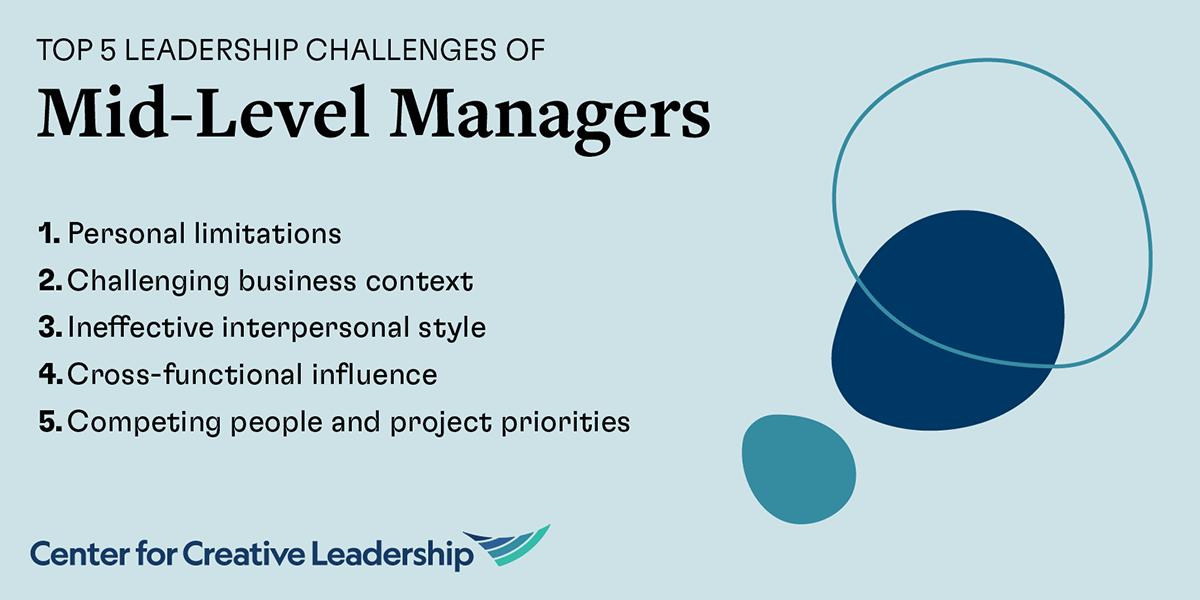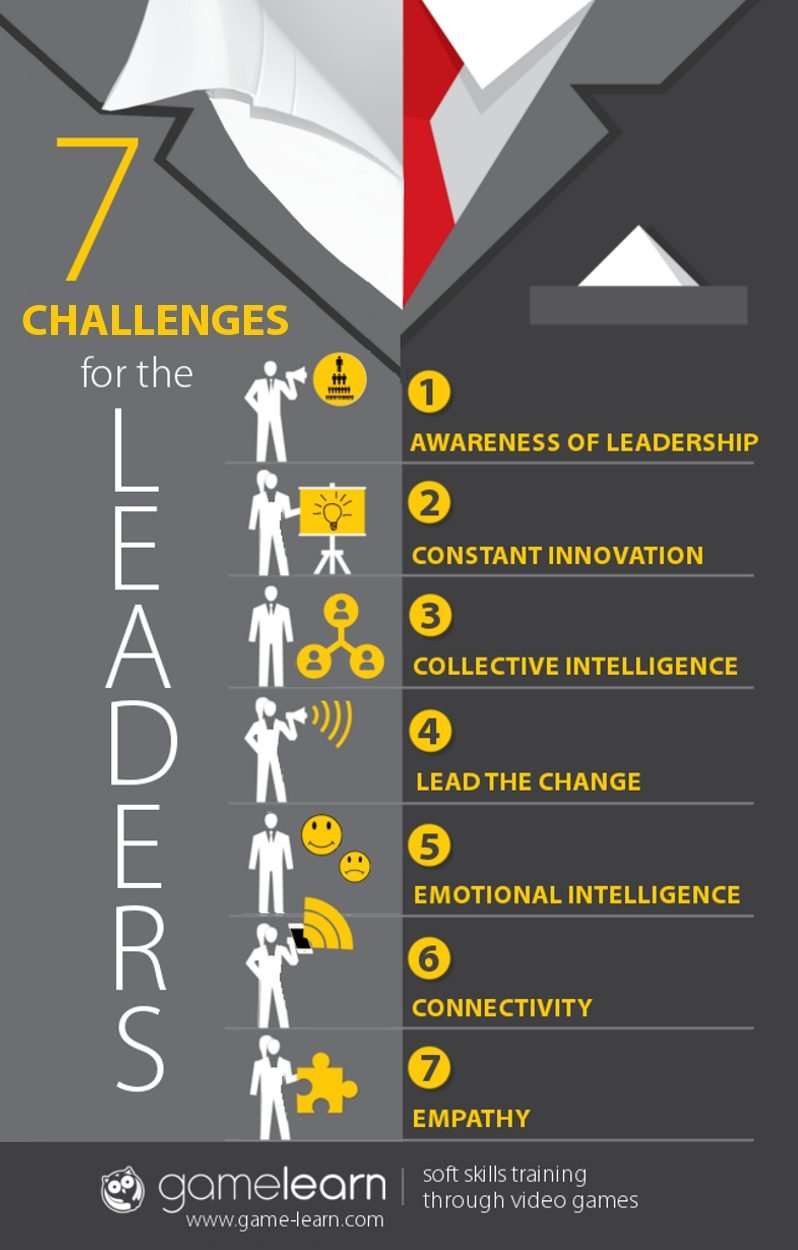Leadership is a rewarding journey, but it comes with its own set of challenges. Every leader, whether new or experienced, faces obstacles that test their skills and resolve.
Effective leadership requires more than just guiding a team. It involves navigating complex situations, managing diverse personalities, and making tough decisions. Leaders often encounter issues like motivating team members, handling conflicts, and maintaining productivity. These challenges can impact the success and morale of the team.
Understanding these common hurdles is crucial for any leader aiming to improve their effectiveness. By recognizing and addressing these challenges, leaders can foster a positive work environment and drive their team toward success. Let’s explore some key leadership challenges and how to overcome them.

Credit: www.learnow.live
Table of Contents
ToggleCommon Leadership Challenges
Effective leadership is not a walk in the park. Even the most skilled leaders face numerous challenges in their roles. These challenges can range from managing a diverse team to making tough decisions. Understanding common leadership challenges helps leaders navigate these obstacles with confidence.
Communication Issues
Communication is the backbone of any organization. Leaders often struggle with ensuring clear and consistent communication across all levels. Miscommunication can lead to misunderstandings and conflicts. Here are some common communication challenges:
- Lack of clarity: Sometimes, messages are not clear, leading to confusion.
- Inconsistent messaging: Different messages from various leaders can create confusion among team members.
- Listening skills: Leaders may not always listen effectively, missing out on important feedback.
To address these issues, leaders can:
- Ensure their messages are clear and concise.
- Maintain consistency in their communication.
- Practice active listening to understand their team’s concerns.
Leaders should also use various communication channels to reach all team members. Emails, meetings, and instant messaging platforms can help in ensuring the message reaches everyone.
Decision-making Dilemmas
Leaders often face dilemmas when making decisions. These dilemmas can arise due to various factors, such as limited information or conflicting interests. Here are some common decision-making challenges:
- Information overload: Too much information can make it hard to decide.
- Risk assessment: Evaluating risks and benefits can be challenging.
- Conflict of interest: Balancing different stakeholders’ interests can be tough.
To tackle these dilemmas, leaders can:
- Break down information into manageable parts.
- Use data and analytics to guide their decisions.
- Consider all stakeholders’ perspectives before making a decision.
Leaders should also create a decision-making framework. This framework can help in standardizing the process and reducing biases. Ultimately, effective decision-making requires a balance of intuition and data-driven insights.
Managing Team Dynamics
Leadership challenges often revolve around managing team dynamics. Successfully leading a team means understanding and handling the interactions between team members. This includes addressing conflicts, building trust, and fostering a collaborative environment. Effective management of team dynamics ensures that everyone works together towards common goals, boosting productivity and morale.
Conflict Resolution
Conflicts are inevitable in any team setting. Leaders must address conflicts promptly to maintain a healthy work environment. Here are some strategies for effective conflict resolution:
- Identify the Root Cause: Understand the underlying issues causing the conflict.
- Active Listening: Listen to all parties involved without interrupting.
- Stay Neutral: Avoid taking sides to maintain fairness.
- Encourage Open Communication: Allow team members to express their concerns and feelings.
- Seek Solutions Together: Collaborate with the team to find a mutually acceptable solution.
Here’s a table illustrating the steps for conflict resolution:
| Step | Description |
|---|---|
| 1. Identify | Find the root cause of the conflict. |
| 2. Listen | Listen to all parties involved. |
| 3. Stay Neutral | Maintain an impartial stance. |
| 4. Communicate | Encourage open dialogue. |
| 5. Collaborate | Work together to find a solution. |
Handling conflicts effectively leads to a more harmonious and productive team environment.
Building Trust
Trust is the cornerstone of any successful team. Without trust, collaboration and communication suffer. Here are some ways to build trust within your team:
- Be Transparent: Share information openly and honestly.
- Lead by Example: Show integrity and accountability in your actions.
- Encourage Teamwork: Foster a culture of collaboration.
- Provide Support: Offer help and resources when needed.
- Recognize Achievements: Acknowledge and celebrate team successes.
Building trust involves consistent actions over time. Here are the key actions for building trust:
| Action | Description |
|---|---|
| 1. Transparency | Share information openly with the team. |
| 2. Integrity | Act with honesty and fairness. |
| 3. Collaboration | Encourage teamwork and collective effort. |
| 4. Support | Provide help and resources. |
| 5. Recognition | Acknowledge and celebrate achievements. |
Building trust fosters a positive team environment where members feel valued and motivated.
Adapting To Change
Leadership challenges are numerous, but one of the most significant is adapting to change. Change is constant in today’s fast-paced world, and leaders must navigate these shifts effectively to keep their teams and organizations moving forward. Adapting to change requires flexibility, foresight, and the ability to stay calm under pressure. Below, we explore two crucial aspects of adapting to change: navigating uncertainty and fostering resilience.
Navigating Uncertainty
Uncertainty is an inevitable part of leadership. Leaders often face situations where outcomes are unknown, and decisions must be made without complete information. To navigate uncertainty successfully, leaders need to develop several key skills:
- Decision-Making: Leaders must make quick and informed decisions, even with limited data. This involves assessing risks and potential impacts.
- Communication: Clear communication is crucial. Keeping the team informed about changes and uncertainties helps maintain trust and morale.
- Flexibility: Being open to new ideas and approaches can help leaders adapt to unexpected changes.
Consider the following table summarizing these skills:
| Skill | Description |
|---|---|
| Decision-Making | Making quick, informed decisions with limited data. |
| Communication | Keeping the team informed about changes and uncertainties. |
| Flexibility | Being open to new ideas and approaches. |
By developing these skills, leaders can better manage uncertainty. They can guide their teams through challenging times, ensuring that everyone stays focused and productive.
Fostering Resilience
Resilience is the ability to recover from setbacks and keep moving forward. Leaders who foster resilience within their teams create a culture of strength and adaptability. Here are some strategies to foster resilience:
- Encourage a Growth Mindset: Promote the belief that abilities and intelligence can be developed through dedication and hard work.
- Provide Support: Offer resources and support to help team members cope with stress and challenges.
- Celebrate Small Wins: Recognizing and celebrating small achievements boosts morale and encourages perseverance.
Implementing these strategies can help build a resilient team. A resilient team can handle change more effectively, maintaining productivity and morale even during difficult times.
Leaders need to lead by example. By showing resilience themselves, they inspire their teams to adopt the same attitude. This creates a positive, proactive environment where challenges are seen as opportunities for growth.
In summary, adapting to change is a critical leadership challenge. By navigating uncertainty and fostering resilience, leaders can guide their teams through any situation, ensuring continued success and growth.

Credit: www.ccl.org
Time Management Struggles
Time management struggles are a common challenge for many leaders. Balancing various tasks, meetings, and responsibilities can be overwhelming. Effective time management is essential to maintain productivity and ensure organizational success. Leaders often find themselves stretched thin, trying to juggle multiple priorities. This section will explore two key aspects of time management: prioritizing tasks and delegating effectively.
Prioritizing Tasks
Prioritizing tasks is crucial for leaders to manage their time efficiently. Knowing which tasks to tackle first can make a significant difference in productivity. Here are some tips to help leaders prioritize effectively:
- Identify High-Impact Tasks: Focus on tasks that have a significant impact on your goals. These are often urgent and important.
- Use the Eisenhower Matrix: This tool helps categorize tasks into four quadrants: urgent and important, important but not urgent, urgent but not important, and neither.
- Set Clear Goals: Having clear, achievable goals helps to prioritize tasks that align with these objectives.
- Break Down Large Tasks: Divide big projects into smaller, manageable tasks. This makes them less daunting and easier to prioritize.
- Avoid Multitasking: Focus on one task at a time. Multitasking can reduce efficiency and lead to mistakes.
Leaders can also benefit from using tools and techniques to stay organized. Here is a simple table comparing some popular task management tools:
| Tool | Features | Price |
|---|---|---|
| Trello | Kanban boards, checklists, team collaboration | Free, with premium options |
| Asana | Task tracking, project timelines, team communication | Free, with premium options |
| Todoist | Task lists, project management, reminders | Free, with premium options |
Delegating Effectively
Delegation is a vital skill for leaders. By delegating tasks, leaders can focus on high-priority activities and empower their team members. Here are some strategies for effective delegation:
- Identify Tasks to Delegate: Determine which tasks can be handled by others. Focus on routine tasks that don’t require your expertise.
- Choose the Right Person: Match the task to the team member’s skills and experience. Ensure they have the necessary resources and support.
- Provide Clear Instructions: Communicate the task’s objectives, deadlines, and any important details. Clarity reduces confusion and increases efficiency.
- Set Realistic Deadlines: Allow sufficient time for the task to be completed. Avoid setting unrealistic expectations that can lead to stress and errors.
- Monitor Progress: Check in regularly to provide feedback and support. This helps to ensure the task is on track and allows for adjustments if needed.
Effective delegation not only improves time management but also builds trust and development within the team. Leaders who delegate well can achieve more, reduce stress, and create a more collaborative work environment.
Motivating Teams
Leadership challenges are common in any organization. One of the most significant challenges is motivating teams. A motivated team is more productive, creative, and loyal. But how can leaders effectively motivate their teams? Two key strategies are recognizing achievements and encouraging engagement.
Recognizing Achievements
Recognizing achievements is essential for team motivation. When leaders acknowledge the hard work and success of their team members, it boosts morale and encourages further effort.
Here are some effective ways to recognize achievements:
- Public Recognition: Celebrate achievements during team meetings. Mention specific contributions and successes.
- Personal Notes: Send personalized emails or handwritten notes. Acknowledge their efforts and express gratitude.
- Awards and Certificates: Create awards for various achievements. These could be for ‘Employee of the Month’ or ‘Best Innovator.’
- Monetary Incentives: Offer bonuses or gift cards. Even small tokens of appreciation can make a big difference.
- Extra Time Off: Reward outstanding performance with additional vacation days or flexible work hours.
Recognizing achievements can also include creating a culture where team members recognize each other. Encourage a peer recognition system. This system allows colleagues to highlight each other’s successes. It fosters a supportive and collaborative environment.
Encouraging Engagement
Encouraging engagement is another critical aspect of motivating teams. Engaged employees are more committed and invested in their work. They are also more likely to contribute innovative ideas and solutions.
Consider these strategies to foster engagement:
- Open Communication: Maintain an open-door policy. Encourage team members to share their thoughts, ideas, and concerns.
- Inclusive Decision-Making: Involve team members in decision-making processes. This inclusion makes them feel valued and respected.
- Professional Development: Offer opportunities for growth. Provide training sessions, workshops, and courses that enhance their skills.
- Team Building Activities: Organize activities that promote bonding. These could be team lunches, outings, or workshops.
- Regular Feedback: Give constructive feedback regularly. Highlight strengths and provide guidance on areas for improvement.
Creating a platform for team members to voice their opinions is vital. Conduct regular surveys or feedback sessions. This practice helps to understand their needs and improve the work environment.
Encouraging engagement also means recognizing individual strengths and leveraging them. Assign tasks that align with each team member’s skills and interests. This alignment increases job satisfaction and productivity.

Credit: www.game-learn.com
Cultural Diversity
Leadership challenges in today’s globalized world often revolve around managing cultural diversity. Leaders must navigate various cultural norms, beliefs, and behaviors. This diversity can be a powerful asset but also a complex challenge. Understanding and leveraging cultural diversity is essential for effective leadership.
Embracing Differences
Embracing cultural differences requires a deep understanding of various cultures. Leaders should recognize that each culture has unique values and practices. This understanding helps in creating a harmonious work environment.
Here are some key points to consider:
- Active Listening: Pay close attention to what team members from different cultures say.
- Open-mindedness: Be willing to learn and adapt to new cultural norms.
- Respect: Show respect for cultural differences and avoid stereotypes.
Creating an inclusive environment starts with acknowledging these differences. Leaders can organize cultural exchange events. These events foster mutual understanding and respect among team members.
Consider the following table for cultural awareness strategies:
| Strategy | Description |
|---|---|
| Training Programs | Offer training on cultural sensitivity and awareness. |
| Language Support | Provide language classes or translation services. |
| Diverse Teams | Form teams with diverse cultural backgrounds. |
Enhancing Inclusion
Inclusion goes beyond recognizing differences. It involves integrating these differences into the organizational culture. Leaders play a critical role in fostering an inclusive environment.
Here are some effective practices:
- Inclusive Policies: Develop policies that promote equal opportunities for all employees.
- Feedback Mechanisms: Create channels for employees to share their experiences and suggestions.
- Mentorship Programs: Pair employees from different backgrounds to learn from each other.
Inclusive leadership benefits the organization in many ways. It boosts employee morale and enhances productivity. A diverse team brings varied perspectives, leading to innovative solutions.
Here are some practical steps to enhance inclusion:
- Celebrate cultural holidays and events.
- Encourage diverse viewpoints in decision-making processes.
- Provide diversity and inclusion training for all employees.
By implementing these strategies, leaders can create a workplace where everyone feels valued and included.
Ethical Leadership
Leadership challenges are vast and complex. One of the most significant aspects is ethical leadership. Ethical leadership means leading with a strong moral compass, being honest, and ensuring fair treatment for all. It’s about making decisions that are not only good for the company but also just and right.
Maintaining Integrity
Integrity is the cornerstone of ethical leadership. Leaders with integrity are honest and transparent. They build trust among their team and stakeholders. Here are some key points to consider:
- Honesty: Always tell the truth, even when it’s difficult.
- Transparency: Share relevant information with your team.
- Consistency: Stick to your values and principles at all times.
- Responsibility: Own your mistakes and learn from them.
Here’s a table showing the benefits of maintaining integrity:
| Benefit | Description |
|---|---|
| Trust | Builds strong, reliable relationships. |
| Reputation | Enhances the leader’s and company’s image. |
| Team Morale | Boosts team motivation and loyalty. |
Maintaining integrity is not always easy. Leaders face pressures to cut corners or hide mistakes. But a true leader stands firm on their principles. They lead by example, showing their team the importance of integrity.
Building Accountability
Accountability is crucial for ethical leadership. It means taking responsibility for your actions and decisions. Here’s how to build accountability within your team:
- Set Clear Expectations: Define roles and responsibilities clearly.
- Provide Feedback: Give constructive feedback regularly.
- Encourage Ownership: Empower team members to take charge of their tasks.
- Lead by Example: Show accountability in your actions.
Consider these points to foster a culture of accountability:
- Clarity: Ensure everyone knows what is expected of them.
- Support: Provide the resources and support needed to meet expectations.
- Feedback: Offer regular feedback and recognize good performance.
- Consequences: Establish fair consequences for not meeting responsibilities.
Building accountability leads to a more responsible and productive team. It fosters trust and respect among team members. Each person knows their role and feels valued for their contributions.
Future Leadership Trends
Leading a team has never been easy. Now, with the world changing fast, new trends are emerging. These trends present both challenges and opportunities. Leaders must adapt to stay effective. Let’s explore some of these future leadership trends.
Remote Leadership
Remote work is here to stay. Leading a team from afar requires new skills and strategies. Communication becomes crucial. Clear, frequent updates keep everyone aligned. Here are some key elements of remote leadership:
- Regular Check-ins: Schedule regular one-on-one meetings. This helps maintain personal connections.
- Transparent Communication: Use tools like Slack or Teams. Ensure everyone has access to needed information.
- Flexibility: Respect different time zones and work styles. Allow for flexible schedules.
- Team Bonding: Organize virtual team-building activities. This keeps the team spirit alive.
Remote leadership also means trusting your team. Micromanaging is not an option. Empower employees to make decisions. Trust them to do their job well. This builds confidence and boosts morale.
Another challenge is ensuring productivity. Use project management tools. Tools like Asana or Trello help track progress. They keep everyone accountable. These tools provide a clear picture of what’s being done and by whom.
Here’s a quick comparison of popular remote work tools:
| Tool | Best For | Key Feature |
|---|---|---|
| Slack | Team Communication | Channels for different topics |
| Zoom | Video Meetings | High-quality video calls |
| Asana | Project Management | Task Assignments and Tracking |
Technology Integration
Technology is changing how we lead. Leaders must embrace new tools and platforms. These help streamline processes and improve efficiency. Here are some key areas where technology is making an impact:
- Automation: Automate repetitive tasks. This frees up time for strategic thinking.
- Data Analytics: Use data to make informed decisions. Analyze trends and performance metrics.
- Collaboration Tools: Platforms like Microsoft Teams and Google Workspace enhance teamwork.
- Learning Management Systems (LMS): Use LMS for training and development. Platforms like Moodle or Coursera offer various courses.
Integrating technology also means staying updated with the latest trends. Leaders must continuously learn. Attend webinars and read industry news. This keeps you informed and ready to adapt.
Here’s a brief overview of important tech tools for leaders:
| Tool | Purpose | Benefit |
|---|---|---|
| Salesforce | Customer Relationship Management (CRM) | Tracks customer interactions |
| HubSpot | Marketing Automation | Streamlines marketing efforts |
| Power BI | Data Visualization | Provides insights through data analysis |
Embracing technology is not just about using new tools. It’s about changing the mindset. Encourage your team to be tech-savvy. Provide training and support. This ensures everyone is comfortable with the new tools.
Frequently Asked Questions
What Are Common Leadership Challenges?
Common leadership challenges include managing team dynamics, handling conflicts, and maintaining motivation. Leaders often struggle with decision-making and balancing multiple responsibilities. Effective communication and adapting to change are also significant challenges.
How Can Leaders Improve Team Motivation?
Leaders can improve team motivation by recognizing achievements, providing clear goals, and offering support. Encouraging open communication and creating a positive work environment also help. Regular feedback and opportunities for growth are essential.
Why Is Effective Communication Important For Leaders?
Effective communication is crucial for leaders to convey vision, build trust, and resolve conflicts. It ensures team alignment and boosts morale. Clear communication helps in decision-making and fosters a collaborative environment.
How Do Leaders Handle Workplace Conflicts?
Leaders handle workplace conflicts by addressing issues promptly and impartially. They listen to all parties, identify underlying problems, and facilitate open communication. Implementing fair solutions and promoting a respectful culture are key.
Conclusion
Overcoming leadership challenges requires patience and resilience. Effective leaders listen and adapt. They build strong teams and foster trust. Remember, leadership is a journey, not a destination. Each challenge is a learning opportunity. Stay committed to growth and self-improvement. Success comes from understanding and addressing obstacles.
Lead with empathy and confidence. Your team will follow your example. Keep pushing forward.

